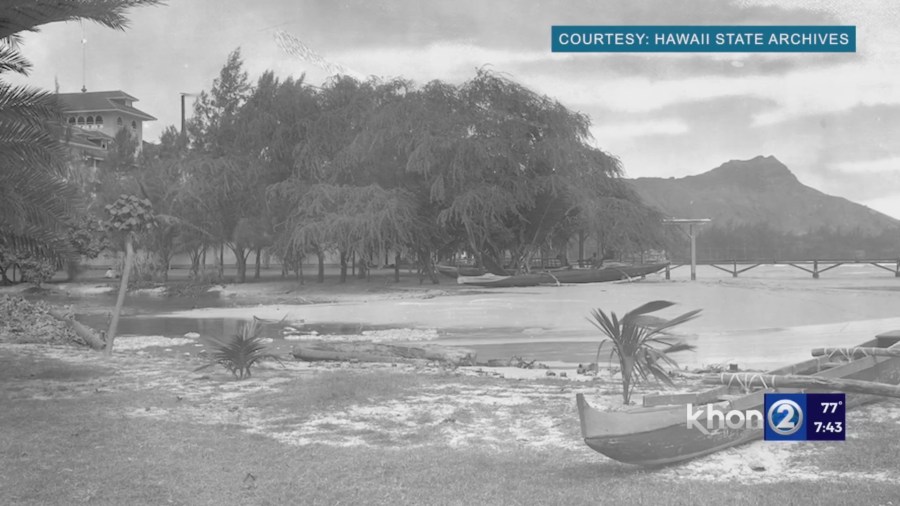HONOLULU (KHON2) – In the ahupuaʻa of Waikiki, which lies in the moku of Kona here on Oʻahu, stands a roadways which translates as “three waters.”
We are speaking of Waikolu Way.
The name Waikolu can be broken up as wai meaning “fresh water” and kolu referring to the number “three.”
It speaks of the three freshwater streams which used to flow through Waikīkī feedings its wetlands and exited into its bay.
One was named Kuekaunahi and exited into Waikīkī’s water in the area named Hamohamo, near where Waikiki Walls is today.
Another was named ʻĀpuakēhau which flowed through the center of Waikīkī and entered into the ocean near today’s Royal Hawaiian Hotel, next to the Moana Surfrider.
The last stream was named Piʻinaio and exited near where the ʻIlikai Hotel is today. That land is named Kālia.
When Kalākaua Ave was first created, it was named Waikīkī Road and made access into Waikīkī much easier.
However, it interfered with the natural drainage of this once wetland, preventing water from flowing out of taro patches and duck ponds into the ocean.
Because water then becoming increasingly still and unsanitary, the Ala Wai Canal was dredged as a means of health and safety.
Stories share that prior to the 20th century, Waikīkī’s marshlands were able to sustain approximately 100,000 Hawaiians.
As Waikīkī began to see an influx of Chinese immigrants, taro patches and fishponds were slowly converted into rice patties and duck ponds.
Thanks to the increase of still water, duck fecal matter and mosquitoes, the Ala Wai Canal began to be dredged in 1922.
Completed in 1928, the Ala Wai, meaning “freshwater way,” stopped and diverted the natural streams from flowing through Waikīkī.
Because of this, the Waikīkī of old is no longer as fishponds and rice patties have been filled in with landfill and depressed by hotels.
Did you know? Now you do!
